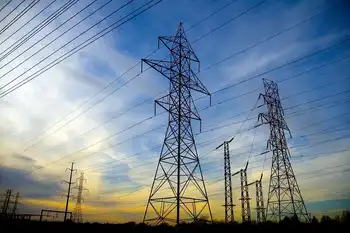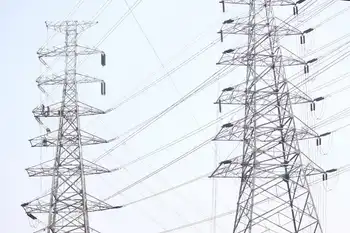Regulations crafted for wind-power turbines
Mountainous Bland and Bath counties are looking to develop ordinances governing wind turbines. Giles County, meanwhile, recently created a permit process that allows farmers and landowners to build and operate single turbines; but the permit process doe not open the door wider for commercial wind farms.
The permit process is similar to ones adopted by Pulaski and Rockingham counties. The activity in Bland and Bath comes less than three months after the State Corporation Commission approved a 19-turbine wind farm in Highland County, a controversial, $60 million project that could begin construction next year.
"They want to get the larger ordinances in place so they can prepare for the arrival of developers," said James Madison University professor Jonathan Miles, founder of the Virginia Wind Energy Collaborative. Five or six energy companies are quietly examining the ridgelines of western Virginia for suitable wind-farm sites, said Miles, a proponent of wind-generated power.
Miles is working to create a "scoring system" to help counties determine which sites are most suited for wind farms and which are least suited. The system would factor in such things as wind constancy, the ease with which a site could be connected to the electric grid, roads, proximity to federal lands, environmental conflicts and impacts on cultural and historical resources.
"We want to know, where do we want them, and where do we definitely not want them," said Sherry Ryder, Bath's county planner and zoning administrator, adding that the county hopes to use Miles' system as a planning tool. Ryder said the county hopes to have public hearings as early as this summer on the new rules.
Jonathan Sweet, county administrator in Bland, said he is already at work to add wind-farm language to the county land-use regulations, and he wants energy companies to know the language is not intended to discourage them.
"We're going to look at ways to embrace it, if the local leadership feels wind farms are a positive addition to the county," said Sweet, adding that he has been contacted by a representative of an energy company.
"We'd like to make sure we get as much bang for the buck and minimize damage. We have some pretty good winds here in the county."
Wind farms of a size similar to the one approved in Highland could potentially pump hundreds of thousands of dollars in tax revenue into the county each year. The prospect of more money did not persuade Patrick County officials to embrace wind farms. Last year, amid hue and cry from landowners after a Pennsylvania company's proposal to build 20 giant turbines several hundred feet high in Patrick, county supervisors adopted an ordinance banning structures of more than 100 feet high.
The company dropped its proposal.
In Giles, which has fielded several inquiries from energy companies, according to zoning administrator Craig Whittaker, the county's current ordinances require energy companies to obtain a special exception to build a wind farm. That would require public hearings, a planning commission recommendation and final approval by the Board of Supervisors.
County officials, he said, believe the rules give them control over the landscape without outrightly prohibiting wind farms.
"They're not going to put up a banner and say, come and put up a wind farm," Whittaker said, "but they're not slamming the door on it either."
Related News

Proposed underground power line could bring Iowa wind turbine electricity to Chicago
CHICAGO - The company behind a proposed underground transmission line that would carry electricity generated mostly by wind turbines in Iowa to the Chicago area said Monday that the $2.5 billion project could be operational in 2024 if regulators approve it.
Direct Connect Development Co. said it has lined up three major investors to back the project. It plans to bury the transmission line in land that runs along existing Canadian Pacific railroad tracks, hopefully reducing the disruption to landowners. It's not unusual for pipelines or fiber optic lines to be buried along railroad tracks in the land the railroad…





